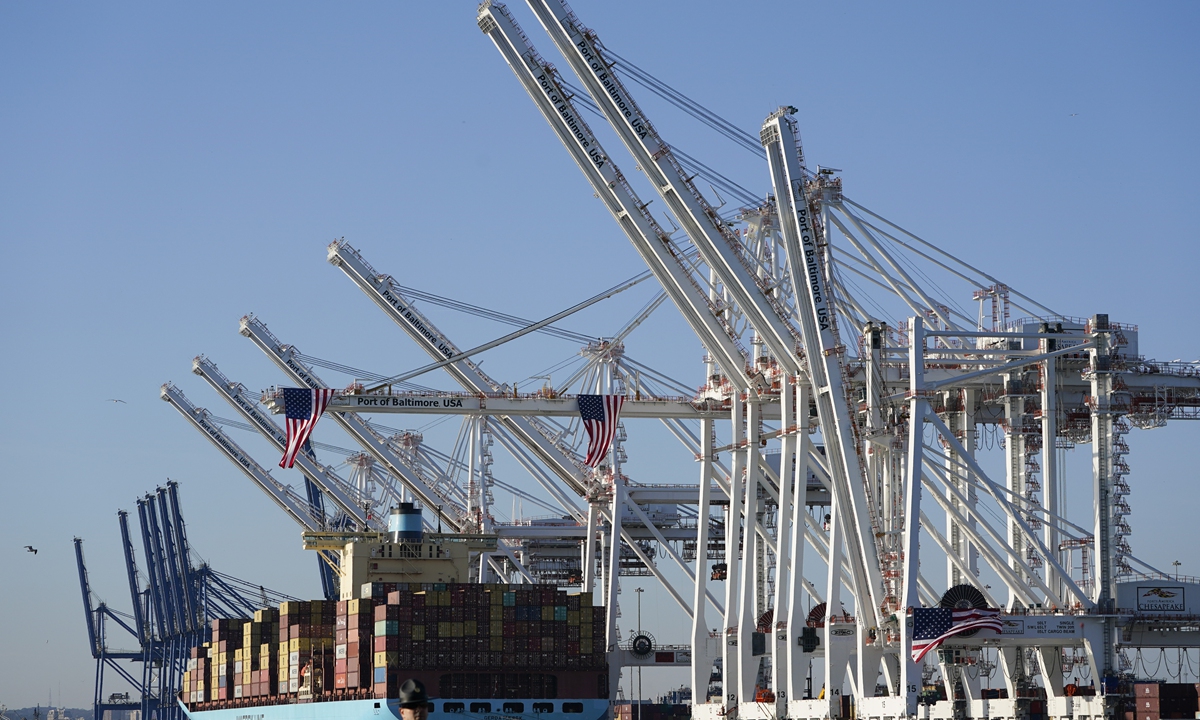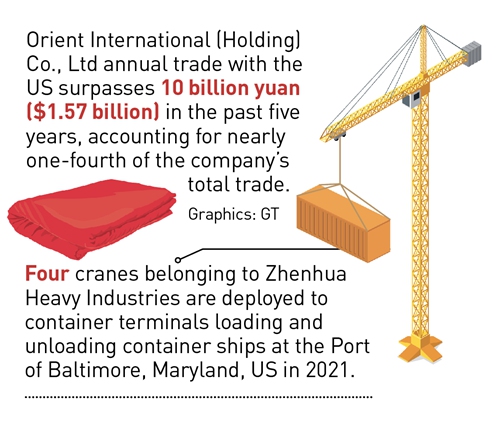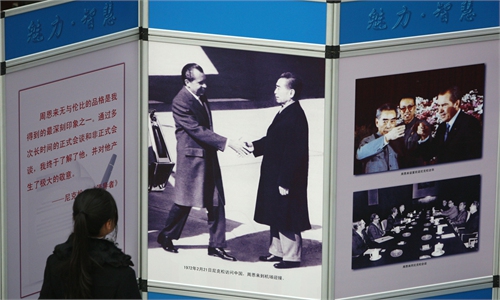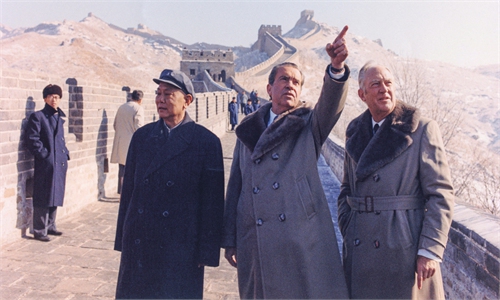Looking back on Nixon's visit, Chinese business leaders claim win-win cooperation still key to bilateral relations

Cranes belonging to Zhenhua Heavy Industries Company stand at the Port of Baltimore,US on November 10, 2021. Photo: VCG
Five decades ago when then US President Richard Nixon made a historic visit to China in 1972 that helped kick-start bilateral diplomatic engagement, he received a whole wool blanket as a gift from the Chinese people. The maker of the gift was a Shanghai-based textile company. Fifty years later, their garments were among the best sellers during Amazon's Black Friday sales in the US.
Following the ice-breaking visit, countless Chinese enterprises were energized to engage in business and investment with the US, as China stepped onto the world stage. Although bilateral relations have encountered many uncertainties, ups and downs, cooperation and mutual benefits are still the main theme, Chinese business leaders told the Global Times on Monday, in summing up the past 50 years.
From wool blanket to fashion shows
Prior to Nixon's visit, a Shanghai-based textile company which is now known as Orient International (Holding) Co., Ltd (OIH) was entrusted with the task to make whole wool blankets at the end of 1971. In January 1972, a special blanket was made using long wavy fiber, giving it a luster and soft feeling.
The blanket is 230 centimeters long and 155 centimeters wide. It weighs 3.26 kilograms and features several flower patterns including the peony and chrysanthemum representing luxury, prosperous, longevity, and the highest degree of skill of Chinese textile technology at the time, Tong Jisheng, president of OIH recalled.
The popularity of the national gift soon took the consumer market by storm. Even though the blanket was priced three times higher than ordinary blankets and cost almost an entire month's salary of a Chinese worker, they were sold out in China immediately, becoming the most sought after and fashionable item among young people.
The blanket also marks the beginning of the company's trade with the US. Since then, the Chinese company has seen its trade with the US set on a fast track.
Before 1972, the company has no foreign trade with the US. Starting from the gift blanket, the trade volume of the company with the US increased from zero to about 10 billion yuan ($1.57 billion) each year in the past five years, accounting for one-fourth of the trade volume of the whole group.
In 1998, it set up a China-US joint venture company in Shanghai to make car carpet for Santanas in Shanghai.
After gaining success in domestic market, the company has expanded to cross-border cooperation with the US in 2017, with the Chinese side holding 70 percent of the share to set up factories in Europe, Africa and the US. The joint venture achieved global sales of $748 million in 2021, giving full play to bilateral advantages.
In 2020, garments from Shanghai Three Gun Clothing and Lily, affiliated brands under OIH took the stage in the New York Fashion Week and clothes from the company have topped the US' Black Friday Amazon selling by category.
From presenting the gift, trade and investment cooperation, to the cultural output, the efforts and footsteps the company made in the past 50 years come with its growing confidence and deepened mutual understanding with the US, Tong told the Global Times on Monday.
Changing perspectives from the US
The change has been recognized by the US side.
"At our joint venture factory in the US, we used to use locally manufactured parts which are slow and expensive to produce. Now some of them have been replaced by Chinese designed parts which are more cost effective," Tong said.
"There is a change in mentality. We are more and more objective about ourselves, the strength and limits of Chinese and US companies through 50 years' communication. It's not about bragging what we have achieved in the 50 years. We still have a lot to learn from the joint venture factories in the US. Then why don't we work together," Tong said.
Shanghai Zhenhua Heavy Industries Company (ZPMC) also told the Global Times that among the bilateral ups and downs, win-win cooperation is the main melody of China and US.
In 2006, the state-owned ZPMC got the bid to make one of the world's most challenging steel fabrication projects for the new suspension span of the San Francisco-Oakland Bay Bridge in the US.

After ZPMC officially started construction, the US put forward a series of technical requirements and questions meanwhile got suspicious on the Chinese company's techniques; but when it was finally completed, the US side said that the craftsmanship has met and even surpassed the requirements of the contract, Wu Yun, vice general manager of Nantong Zhenhua Heavy Equipment Manufacturing Co Ltd, a subsidiary of ZPMC, told the Global Times on Monday.
"We have managed to train 100 engineers with US Certified Welding Inspector (CWI) certificate and the bridge decks have become an inspection-free product," Wu said.
A noticeable detail was that the project had 1.1 million bolts assembled on site without rework, he said. Since then ZPMC has made its fame on the world stage.
Although ups and downs remain, the win-win cooperation between the world's two largest economies is still the main theme, Wu said, noting that if the relationship between the two countries is good, there will be good prospects for cooperation in the future.
The US is currently facing the hollowing out of the industry. They have the technical reserves but the manufacturing capacity is facing out. Chinese companies' advantages are the labor force, the experience accumulated in infrastructure projects, and a large number of industry workers who are familiar with US craft standards, Wu said.
"The two countries are at different development stages. Just like people, the older ones have more experience, but the younger ones have more strength. If you combine experience with strength, I think it will benefit both sides," he added.


